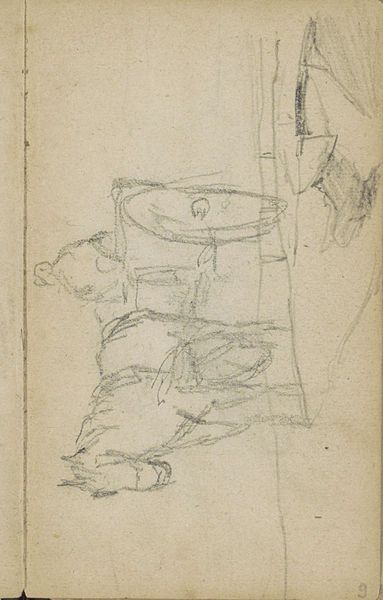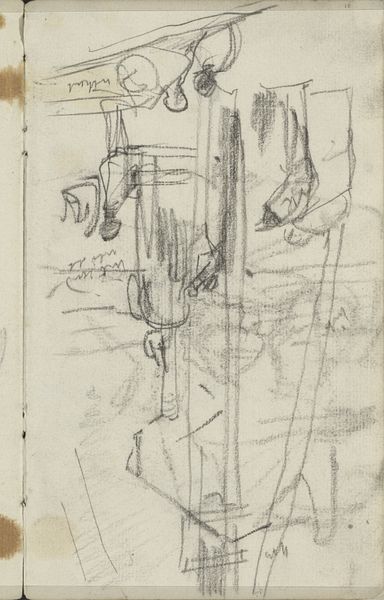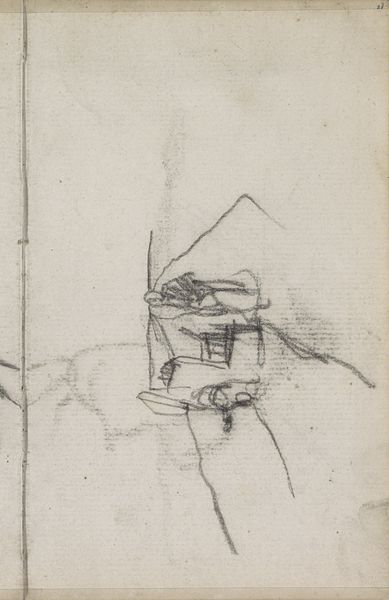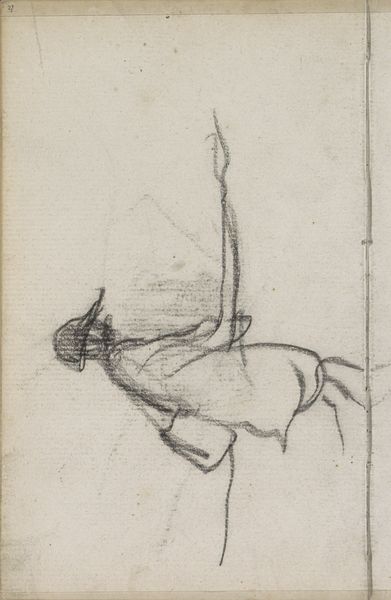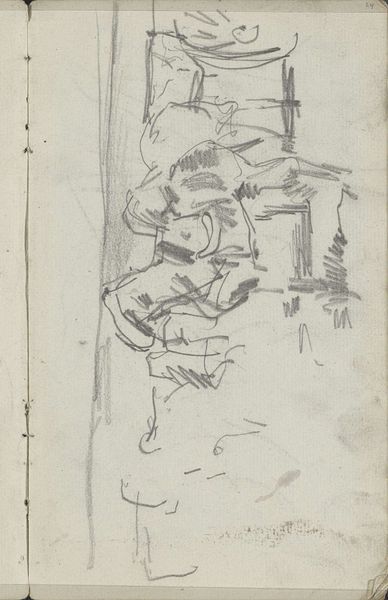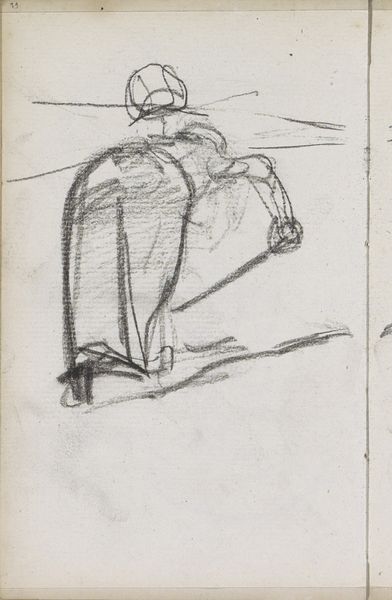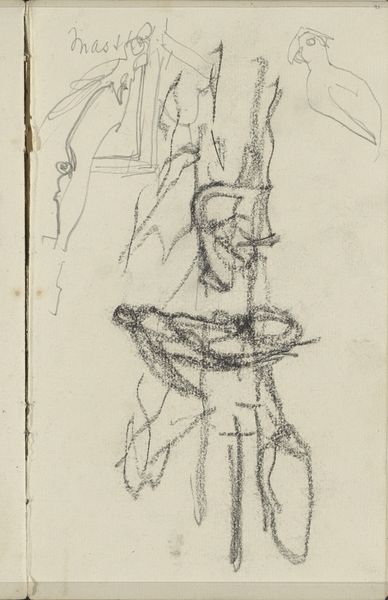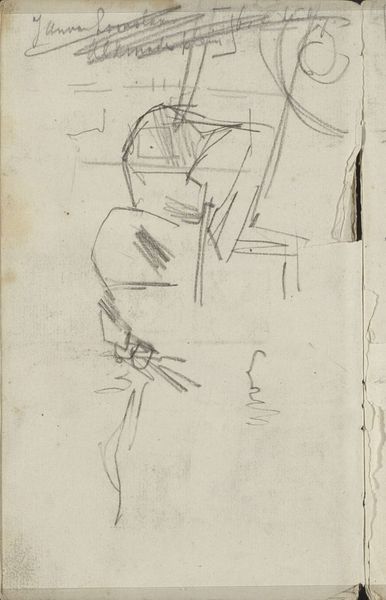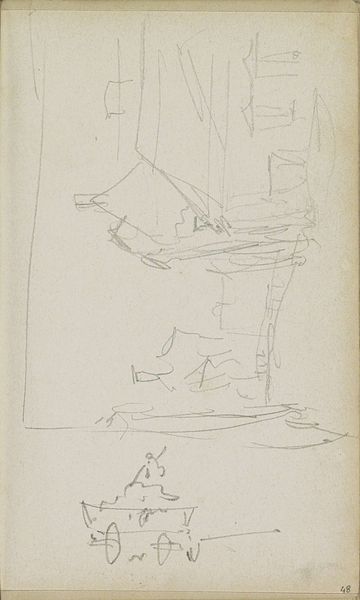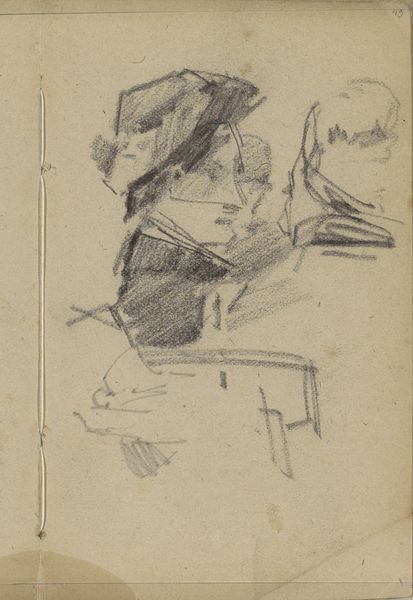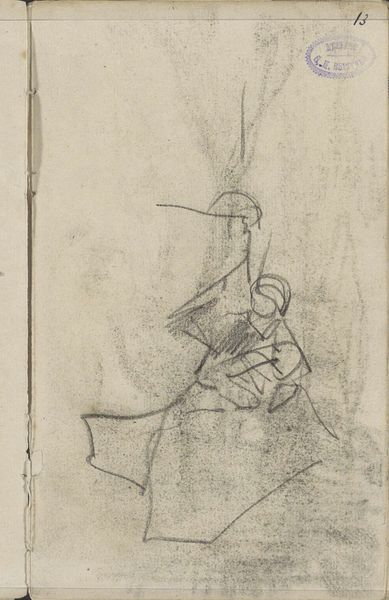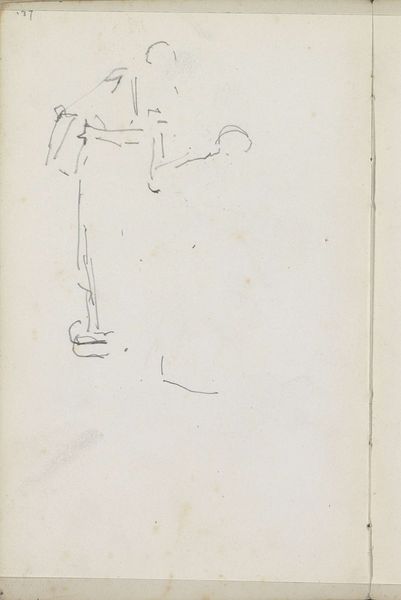
drawing, paper, pencil
#
drawing
#
landscape
#
figuration
#
paper
#
pencil
Copyright: Rijks Museum: Open Domain
Editor: We're looking at "Paard-en-wagen," or "Horse and Wagon," a pencil drawing on paper by George Hendrik Breitner, dating from 1912-1919. It's a quick sketch, almost minimalist. I'm struck by how simple the lines are, yet you get a real sense of movement. What catches your eye in this piece? Curator: Breitner was deeply interested in capturing everyday life in Amsterdam, and this sketch provides a glimpse into the city's transportation at the time. Beyond just a representation of a horse and wagon, what social context do you think this image speaks to? Think about the role of horses versus the emerging presence of automobiles during this period. Editor: Well, it makes me think about the transition that was happening. The horse and wagon were traditional, part of the older, slower pace of life, but you know the rise of cars must have been very disruptive to the landscape of society and in cities specifically. Was Breitner part of any movement during this shift? Curator: Breitner was associated with Amsterdam Impressionism. He tried to capture fleeting moments and everyday scenes. The choice of such a quotidian subject says a lot, doesn’t it? It implies that such images of horses moving goods and passengers were the common and ordinary thing to see daily in Amsterdam. But what does the rapid and new rise of automobile imagery communicate? Editor: Maybe that progress always leaves something behind and we begin to forget? So Breitner is making sure we remember the past with this work. I also feel like I am more appreciative now. Curator: Precisely! Now how does Breitner position himself among the major transformations impacting city life in the beginning of the 20th century? That question opens many interesting perspectives for understanding his intentions. Thanks to our discussion, I feel I understand the piece even more.
Comments
No comments
Be the first to comment and join the conversation on the ultimate creative platform.
